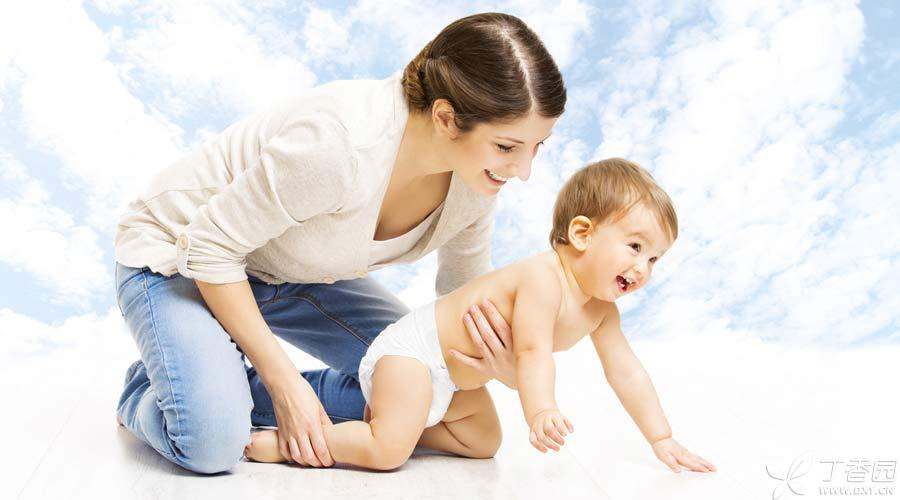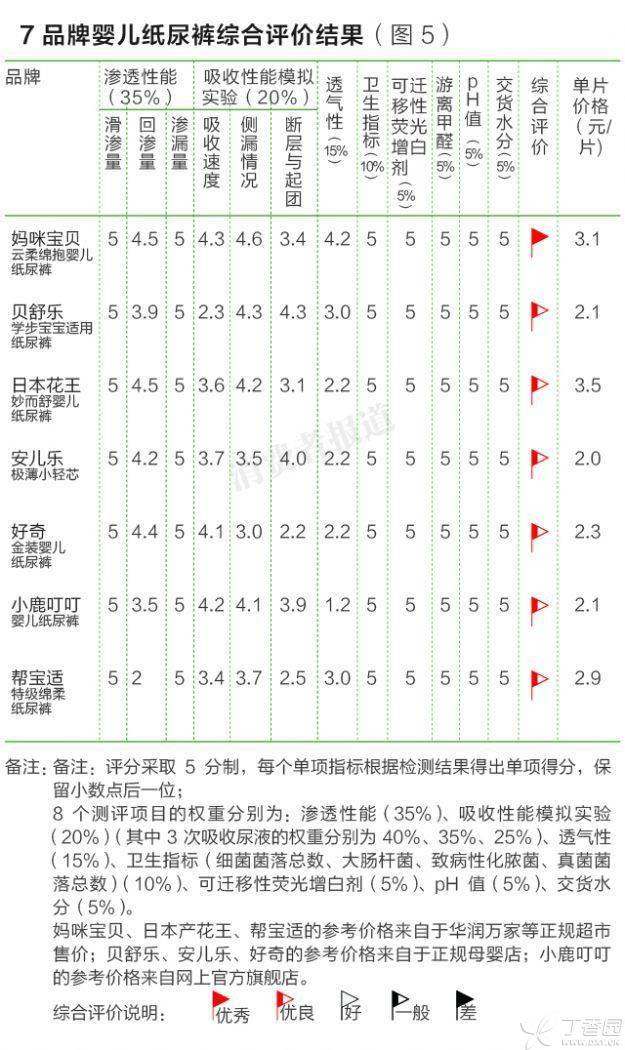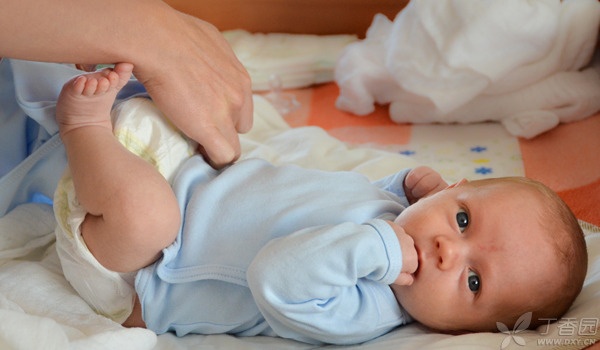
In addition to milk powder, the mother and infant products that mothers are most concerned about are diapers. Which diaper is more worthy of mothers’ trust?
In February 2015, < < Consumer Reports > > submitted 7 brands of baby diapers such as Mummy Baby, Japan Flower King, Curiosity, Pampers, Beishule, Anerle and Fawn Ding Ding to a third-party authoritative testing organization to test their absorption performance, air permeability, mobility fluorescent whitening agent, free formaldehyde content, hygiene indicators and other items.
The test results are shown in the following figure:

Mummy Baby: comprehensive performance is better, the price of a single piece is also higher. Pampers: poor performance in the amount of infiltration, the final overall ranking is lower, and the price is also higher than several local brands. Aner Le extremely thin small light core: performance in terms of cost performance is better, followed by Beishule. The cost performance of local brands is generally higher than that of foreign brands.
Does each test index mean what?
The following is a brief introduction to the significance of the main detection indicators.
1. Permeability
Sliding amount: It is mainly related to the hydrophilicity of the surface layer to urine. Generally, the better the hydrophilicity, The smaller the slip seepage, At that same time, there is a certain correlation between the amount of slip seepage and the absorption rate and so on, It can reflect the speed of diaper absorbing water to a certain extent. Return seepage: Reflects the absorption capacity and water-locking capacity of diapers. If under certain pressure, the amount of infiltration is large, it will lead to contact between baby skin and urine, which is easy to breed bacteria and hurt skin. Leakage: reflects the amount of urine leaking from the diaper bottom film. If the amount of leakage is too large, diapers are equivalent to not playing the basic performance.
2. Water absorption
Water absorption speed: If the diaper cannot absorb urine quickly during the baby’s urination process, it may leak urine; The absorption speed is slow, the baby’s skin and urine contact time is too long, may also hurt the skin. Can’t afford lump continuous layer: mainly related to the comfort of the baby when using.
3. Air permeability
Baby’s skin sweat glands perspiration pores are very few, and the temperature of the skin cannot be well controlled. If diapers have poor air permeability, after urine is absorbed, hot air and moisture are easy to make the baby feel sultry, which will seriously cause small fart redness, inflammation, diaper rash, etc.
4. Fluorescent whitening agent
Many parents are worried about the potential risks of fluorescent whitening agents. However, in this test, 7 brands of diapers have not been detected [mobile fluorescent whitening agents], so parents need not worry.

How to keep the baby away from red fart?
Many mothers are worried about their baby’s [red fart], but are diapers really the only culprit of [red fart]? How to avoid [red fart]?
1. Why [Red Fart]?
Baby [red fart], medical terminology called [diaper dermatitis] or [diaper rash], refers to the dermatitis in the area covered by diapers. Babies who use diapers or diapers are prone to diaper dermatitis. Fortunately, diaper dermatitis is generally not serious, and care will improve if they are treated correctly at home.
Baby’s skin is delicate, and it is easy to appear [red fart] if it is exposed to airtight humid environment for a long time and stimulated by urine, feces and other substances. In addition, the baby’s skin is thin and easy to fester due to friction.
2. Frequent change is the key.
Mom needs to explore the frequency of changing diapers by herself and need not be too dogmatic.
First of all, babies of the same age group have very different urination frequency. For example, they are all 3-month-old children, and it is normal to change diapers 12 or 20 times a day. Therefore, parents are advised to adjust the frequency of changing diapers according to each child’s own characteristics.
Secondly, foreign diapers are usually replaced once they urinate. On average, urination is changed twice in China.
Thirdly, the total absorption amount of large-size diapers of mainstream brands in the market is usually about 300 ml, and the effective use area is about 50 ~ 60%, i.e. 180 ml, which is roughly the amount of 3 urination times for infants. Therefore, it is recommended that the urination times of large-size diapers should not exceed 3 times.
3. [Red Fart] Has something to do with diaper quality,
Poor air permeability and easy formation of humid environment; Poor water absorption will increase the contact time between urine and baby’s skin. Rough material will wear the baby’s skin, poor adhesion and poor elasticity will aggravate friction.
Pediatricians suggest that parents should buy diapers of better quality through regular channels to reduce the probability of baby’s [red fart] and avoid deterioration of diaper dermatitis.
After each baby defecates, do not wipe with wet paper towel, rinse with clear water as much as possible, try to blow dry with a low-wind hair dryer after cleaning, keep local skin dry, and then apply hip cream containing zinc oxide.
If the baby’s red fart is serious and does not improve for a long time, he should go to the hospital in time.
Responsible Editor: Zhang Jingyuan
This article is reprinted from Consumer Reports
